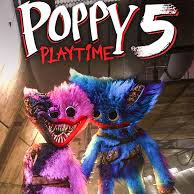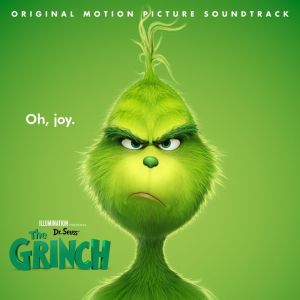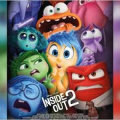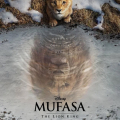The Grinch
The holiday season has a way of bringing old stories back into our lives, freshened for each new generation. "The Grinch," a character originally crafted by Dr. Seuss, has seen multiple adaptations, each adding its own delightful twist to the Grinch's classic tale. As a fan of animated features, I recently watched the latest animated version of "The Grinch," and it's safe to say that it rekindled my appreciation for this timeless Christmas tale.
From the opening scenes, where Whoville is depicted as a fantastical winter wonderland, it is clear that the film aims to immerse viewers in a visually stunning world. The aesthetic of Whoville is whimsically Seussian, with bright colors, twirling landscapes, and architecture that defy conventional logic. It's as if every frame is a lovingly crafted illustration from a storybook comes to life, teeming with delightful details waiting to be discovered.
History of The Grinch
The Grinch's story dates back to 1957 when Dr. Seuss first introduced us to the Christmas-hating character in "How the Grinch Stole Christmas!" The narrative about a grumpy recluse whose heart is transformed through the warmth of community and generosity has resonated with audiences ever since. What's truly fascinating is how the character has been reimagined over decades, capturing the essence of the original while speaking to contemporary themes.
Chuck Jones was the first to animate the Grinch for television in 1966. His version, featuring Boris Karloff's iconic narration, set the gold standard for how the story should be visually and emotionally conveyed. Fast forward to today, and Illumination's full-length animated film offers a fresh perspective while remaining true to the heartwarming core of Seuss's creation.
Why The Grinch Remains Interesting
What draws viewers repeatedly to the Grinch's story is its universal themes of redemption, community, and the true spirit of Christmas. This latest installment breathes new life into these concepts, ensuring their relevance for audiences young and old. The narrative construction remains simple and potent, striking a balance between humor and sentimentality.
Furthermore, the portrayal of the Grinch by Benedict Cumberbatch adds layers to the character. Opting for an American accent, Cumberbatch brings a subtle warmth, making this Grinch more relatable. He is not merely a cranky creature but someone shaped by his past experiences and longing for acceptance, which makes his transformation all the more poignant.
My Impressions: Characters and Voice Acting
The voice acting in this animated feature is top-notch. Cumberbatch's interpretation of the Grinch is complemented by a stellar cast. Rashida Jones as Cindy Lou Who's mother injects the film with tenderness and a sense of real-world challenges faced by single parents during the holiday season. This addition provides a grounded counterpoint to the fantastical elements, making the story more relatable.
Cindy Lou Who herself, voiced by Cameron Seely, is a delightful bundle of energy and innocence. Her genuine desire to help her overworked mother is heartwarming, serving as the narrative's moral compass. Her interactions with the Grinch give the story its emotional depth, turning what could be a simplistic character arc into a richer tapestry of personal growth and understanding.
Visual Cues and Artistic Style
One cannot discuss this version of "The Grinch" without acknowledging the visual artistry that defines every scene. The animation is lush and vivid, echoing the playful absurdity of Dr. Seuss's imagination while also providing something distinctly new. The character designs are not only vibrant but imbued with an emotional expressiveness that communicates as much as the dialogue.
The contrast between Whoville and the Grinch's lair on Mt. Crumpit is striking. Whoville is alive with color and movement, a place bustling with holiday cheer. In contrast, the Grinch's home is depicted as a barren, cave-like abode — capturing his emotional distance from the joys of the season. These settings not only serve as backdrops but also act as extensions of the characters’ inner worlds.
Musical Score and Sound Design
The music, scored by the talented Danny Elfman, plays a crucial role in conveying the film's whimsical and often poignant moments. It weaves seamlessly through the narrative, enhancing both the comedic and the tender scenes. From its playful beginning to its uplifting conclusion, the score serves as an auditory journey that mirrors the Grinch’s own arc.
Popular holiday tunes also make an appearance, ensuring that the soundscape is as festive as the visuals. Pentatonix’s rendition of "God Rest Ye Merry Gentlemen" provides an enchanting moment of respite, while Tyler the Creator's new take on "You're a Mean One, Mr. Grinch" captures the mischievous spirit of the character.
The Role of Humor
The inclusion of comedy is masterfully handled in this adaptation. The jokes are light-hearted and, at times, surprisingly clever, appealing to both children and adults alike. Max, the Grinch’s loyal dog, serves as a source of much of the physical comedy, with his earnestness and ingenuity often making him the unsung hero of scenes.
Slapstick antics are appropriately balanced with witty banter, keeping the film’s tone lighthearted without undercutting its emotional stakes. The humor does not merely break tension but enhances the narrative, making the Grinch's eventual change of heart feel all the more joyous and sincere.
Storytelling and Pacing
The pacing of the film is well-judged, with a natural flow that keeps the viewer engaged from start to finish. The film does justice to the original plot while expanding it to explore more character backgrounds and relationships. This attention to detail ensures that even the quiet moments feel significant and earned.
By delving into the Grinch’s past and the motivations of Whoville’s citizens, the film creates a tapestry of interconnected stories, making the eventual community reconciliation resonate deeply. It’s storytelling that understands the need for moments of reflection amid the hustle and bustle of a Christmas narrative.
The Emotional Core
What stands out for me is how this film artfully handles the emotional undercurrents of its story. Each interaction has a tangible impact on the characters, building toward a culminating moment that feels both inevitable and deeply moving. The Grinch's change of heart is depicted with a gentle sincerity that avoids sentimentality while embracing heartfelt authenticity.
The scenes shared between the Grinch and Cindy Lou are particularly impactful, as they highlight the film’s central message — the importance of empathy and understanding. Their relationship acts as the catalyst for transformative change, not just for the Grinch but for the entirety of Whoville.
Technological Excellence
From a technical standpoint, the animation's fluidity and richness are impressive. Illumination has brought the Seussian world to life with a polish and flair that makes it one of the studio’s more visually captivating works. The blend of traditional animation principles with modern digital techniques creates a seamless viewing experience.
Each scene is a testament to technological artistry, from the meticulously rendered snowflakes that fall gently on Whoville to the expressive animation that brings the characters’ emotions to life. It's a sensory experience that captivates the viewer, allowing them to fully immerse themselves in this enchanting world.
How It Resonates with Today's Audience
The timelessness of "The Grinch" lies in its ability to speak to different audiences across generations. This version emphasizes the importance of community and compassion, themes that feel particularly relevant in today's fast-paced world. In focusing on the Grinch’s backstory and the pressures faced by Cindy Lou’s family, the film touches on widely relatable aspects of modern life.
Yet, despite these contemporary references, the core message remains unchanged: Christmas cheer cannot be stolen because it resides in the hearts of those who embrace it. This appeals to the nostalgia for simpler, enduring values, making it a film that resonates well beyond its intended family audience.
Conclusion
In conclusion, the latest animated version of "The Grinch" is a delightful experience that respects its roots while offering enough freshness to warrant yet another retelling of the classic tale. It combines visual splendor, engaging voice performances, and a thoughtful narrative to capture the magic of the holiday season.
Though it may not surpass the Chuck Jones classic in terms of iconic status, it stands firmly on its own merits as a vibrant addition to the holiday film genre. Whether watched as a family tradition or as a standalone piece, "The Grinch" is sure to warm your heart and remind you that the true spirit of Christmas lies beyond material possessions.
- Good story and plot
- Not for summer


















